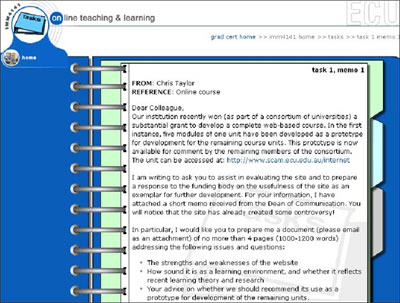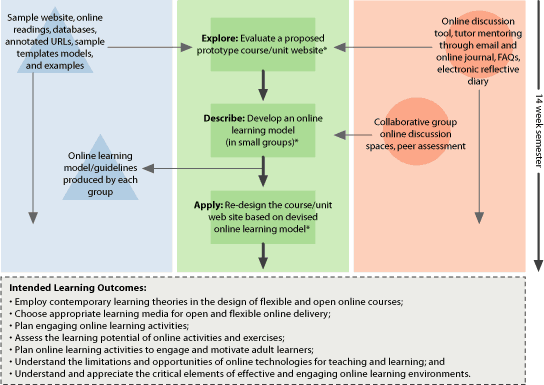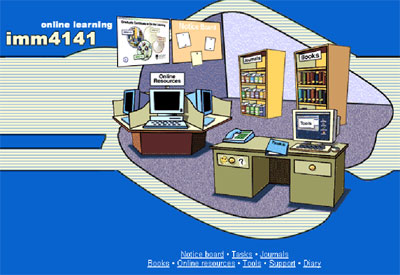|
WHAT STUDENTS DO
The unit is based upon a task where the student takes on
a role in a scenario set in a fictitious university. The context
is one where the student is required to evaluate a website
that has been set up as an exemplar for a consortium of universities
planning to develop a joint online course. The prototype unit
is well presented and employs the multimedia aspects of the
internet well, but it uses a very didactic, content-oriented
approach. The students then, in collaboration with other students
(‘representatives from the other universities’)
recommend a set of guidelines for website development, and
then redesign the original website (or one of their own choosing)
according to those guidelines.
All the tasks are presented in the form of a memo, and are
presented in a realistic manner to reflect the kind of evaluation
and design tasks that might be expected of academics.

Example screen display of a "memo"
All these tasks require a knowledge of contemporary thought
and research in online learning, and the resources to investigate
this are provided on the unit website. While comprising a
single sustained task, the activity can be evaluated at three
points. So whilst there is one main task it is comprised of
three sub-tasks that make up the assessable components of
the unit.
CRITICAL ACTIVITIES
In many ways, all the tasks are critical to this design.
Any one of the tasks could be conducted in isolation but it
is the cumulative experience of the three that characterises
the learning design.
SIGNIFICANCE OF ACTIVITIES AND THEIR ORDER
The significance of the activities is that the student is
able to reflect on the evaluation and design of learning environments
from an informed perspective. The evaluation allows students
to assess an inadequate learning environment and reflect on
why the site does not work. The next task is the collaborative
building of a model, (based on an extensive reading of literature
and research) and the third is the design of a learning environment
according to the model. The sequence is logical in that students
evaluate a site based on their reading, design a model of
their own and then apply it.
|


